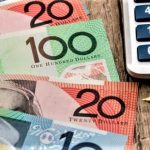The gold market has entered a cautious phase at the start of the week, weighed down by renewed strength in the US Dollar and rising global trade optimism. Despite a brief attempt by dip-buyers to capitalize on early losses, the precious metal remains under pressure as traders adopt a wait-and-see stance ahead of the Federal Reserve’s pivotal monetary policy decision on Wednesday.
Gold Slips for Third Straight Day as Risk Appetite Returns
Gold (XAUUSD) prices are down for the third consecutive session, hovering around the $3,335 mark in early European trading on Monday. After opening the week with a bearish gap, the yellow metal attempted a modest rebound, which quickly lost steam as the broader market sentiment tilted toward riskier assets.
A key driver behind the weakness is a shift in investor appetite, as global markets reacted positively to trade developments between major economies. The announcement of a US-EU trade pact coupled with continued diplomacy between the US and China has dulled demand for safe-haven assets such as gold.
Dip Buyers Emerge but Lack Conviction Amid Broader USD Strength
While some technical buying was evident following the bearish gap, gold’s gains remain capped. Traders appear hesitant to make aggressive moves ahead of this week’s key event the Federal Open Market Committee (FOMC) meeting.
The US Dollar, meanwhile, continues to gain traction, exerting downward pressure on the non-yielding metal. A firmer greenback reduces gold’s appeal for foreign investors and typically corresponds with declining bullion prices.
FOMC in Focus: Traders Brace for Powell’s Rate-Cut Signal
The upcoming FOMC decision, set for release on Wednesday, looms large over gold markets. Although the Fed is widely expected to leave rates unchanged, the central bank’s policy statement and press conference could offer vital clues about its future rate trajectory.
Investors are particularly interested in any indication of a policy pivot, especially given recent calls from Fed Governor Chris Waller and Vice Chair Michelle Bowman for a rate cut in July. These calls are notable given their alignment with President Trump’s vocal criticism of Fed Chair Jerome Powell—a situation that has sparked concern about the central bank’s independence.
This growing political pressure on the Fed could weigh on the Dollar if markets perceive the central bank as bowing to external influence, thereby providing support for gold. However, until Powell speaks, uncertainty will dominate market sentiment.
Trump’s Trade Diplomacy Lifts Risk Sentiment, Hurts Gold
One of the major catalysts dampening gold’s momentum is a global shift in sentiment toward optimism. Over the weekend, US President Donald Trump and European Commission President Ursula von der Leyen announced a landmark trade agreement, setting a baseline tariff of 15% on most EU goods entering the US.
This news followed reports of renewed trade talks between the US and China, as well as progress on a separate US-Japan deal. The diplomatic overtures have bolstered equity markets, encouraged risk-taking, and further reduced safe-haven flows into gold.
US Dollar Gains on Rate Expectations and Safe-Haven Demand
Despite growing risk appetite, the US Dollar has managed to stay resilient. Its relative strength can be attributed to a mix of solid US macro data, lingering inflation fears due to tariffs, and expectations that the Fed will remain cautious on rate cuts unless economic indicators soften significantly.
The Dollar Index (DXY) rose modestly in early trading, continuing a pattern of upward momentum that began late last week. A strong USD typically pressures gold, making the metal more expensive for overseas buyers and less attractive as a reserve asset.
Macro Data Ahead: Gold Traders Eye Economic Cues
Beyond the FOMC meeting, gold traders are closely watching a series of upcoming US economic releases this week. Key data points include:
US Consumer Confidence (Tuesday)
US Q2 GDP (Thursday)
Core PCE Price Index – the Fed’s preferred inflation measure (Friday)
These reports will help shape expectations around future Fed policy moves. Weak data could reignite speculation around rate cuts and bolster gold, while stronger-than-expected numbers may reinforce the Dollar’s appeal and drag bullion lower.
Fed Independence Debate Adds Volatility to the Mix
Adding another layer of uncertainty is the political rhetoric surrounding the Federal Reserve. President Trump’s recent personal attacks on Fed Chair Jerome Powell have raised fears about the central bank’s ability to act independently.
Should Powell appear to bow to political pressure by hinting at a more dovish stance it could undermine confidence in the Dollar and offer a short-term boost to gold. However, a reaffirmation of Fed independence could strengthen the USD and keep gold under pressure.
Gold Technical Outlook: $3,320 Key Support, $3,360 Resistance
From a technical perspective, gold appears to be in a consolidation phase after failing to extend its early rebound. Immediate support lies at the $3,320 level, near last week’s low. A break below this could open the door to further downside, potentially targeting $3,290.
On the upside, initial resistance sits around the $3,360 mark, followed by a more significant barrier at $3,385, the high from last week. Unless bulls reclaim these levels, the broader bias remains tilted to the downside in the short term.
Investor Strategy: Patience Ahead of the Fed
In the current environment, many investors are opting for caution. The combination of a resilient US Dollar, improving trade sentiment, and an uncertain Fed outlook is discouraging large directional bets in gold.
Institutional traders, in particular, appear to be reducing exposure ahead of Powell’s remarks, which could set the tone for the remainder of Q3. Until clearer guidance emerges, gold may continue to trade within a narrow band, with swings driven by headlines and sentiment shifts.
Conclusion: Gold Faces Crucial Test This Week
The gold market is at a crossroads. While dip-buying interest shows that long-term bullish sentiment remains intact, the near-term outlook is clouded by a mix of Dollar strength, geopolitical developments, and looming central bank uncertainty.
This week’s FOMC decision and accompanying macroeconomic data releases are likely to determine whether gold can resume its upward trajectory or faces deeper retracement. Until then, caution
is likely to prevail as investors await clarity on the Fed’s rate path and broader macro dynamics.
Disclaimer: This blog is for informational purposes only and does not constitute financial advice. Always conduct your own research and consult a professional advisor before making investment decisions.
[sc_fs_multi_faq headline-0=”h2″ question-0=”Why is gold price falling despite global uncertainty?” answer-0=”Gold prices are under pressure primarily due to a stronger US Dollar and improving global trade sentiment. Recent deals between the US and EU, as well as renewed talks with China, have boosted risk appetite and reduced demand for safe-haven assets like gold.” image-0=”” headline-1=”h2″ question-1=”How does the US Dollar impact gold prices?” answer-1=”A stronger US Dollar makes gold more expensive for foreign investors, reducing demand. Since gold is priced in USD, any increase in the currency typically leads to a decline in gold prices. ” image-1=”” headline-2=”h2″ question-2=”What is the significance of the FOMC meeting for gold markets?” answer-2=”The Federal Reserve’s interest rate decisions significantly impact gold. Lower interest rates reduce the opportunity cost of holding gold, which doesn’t yield interest. Markets are watching the FOMC closely for any hints of future rate cuts.” image-2=”” count=”3″ html=”true” css_class=””]









